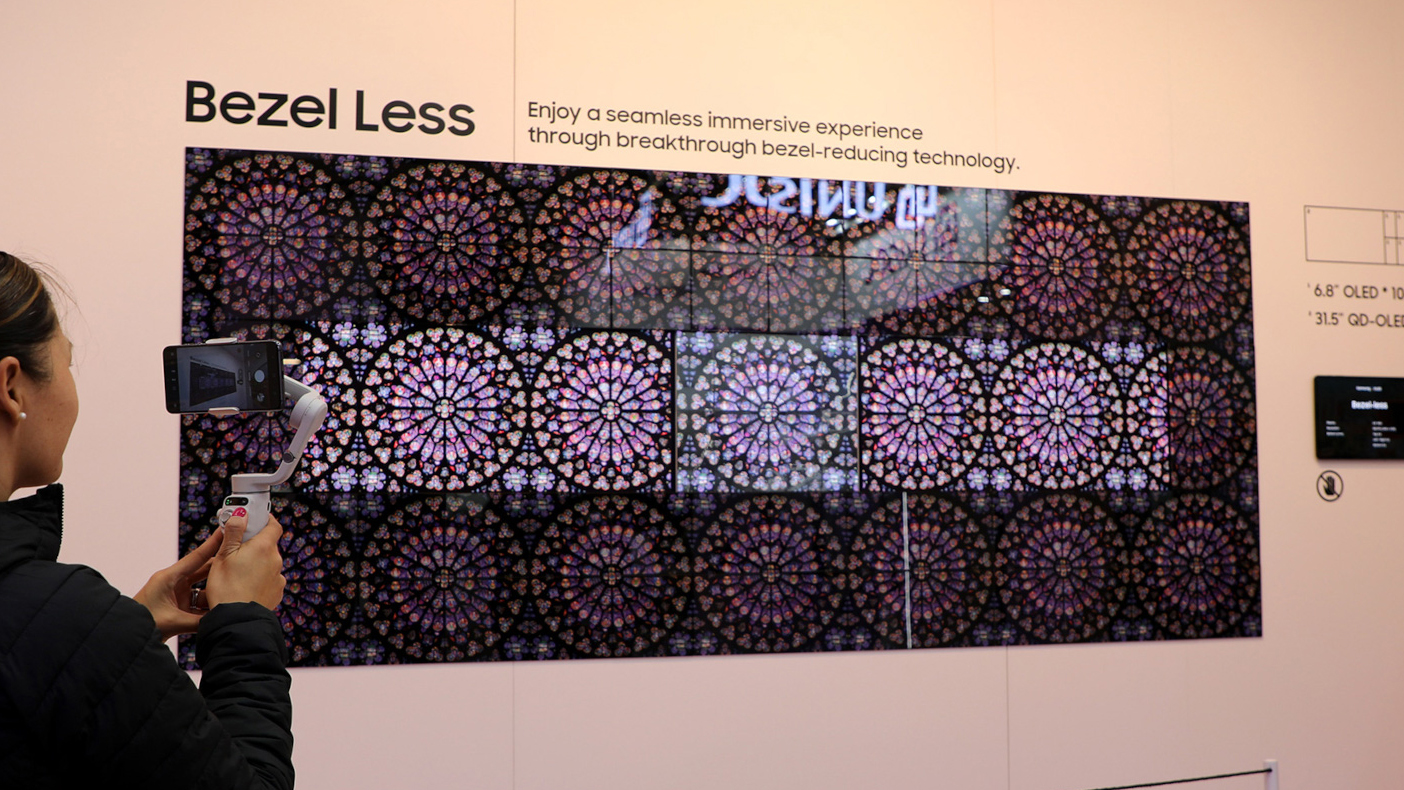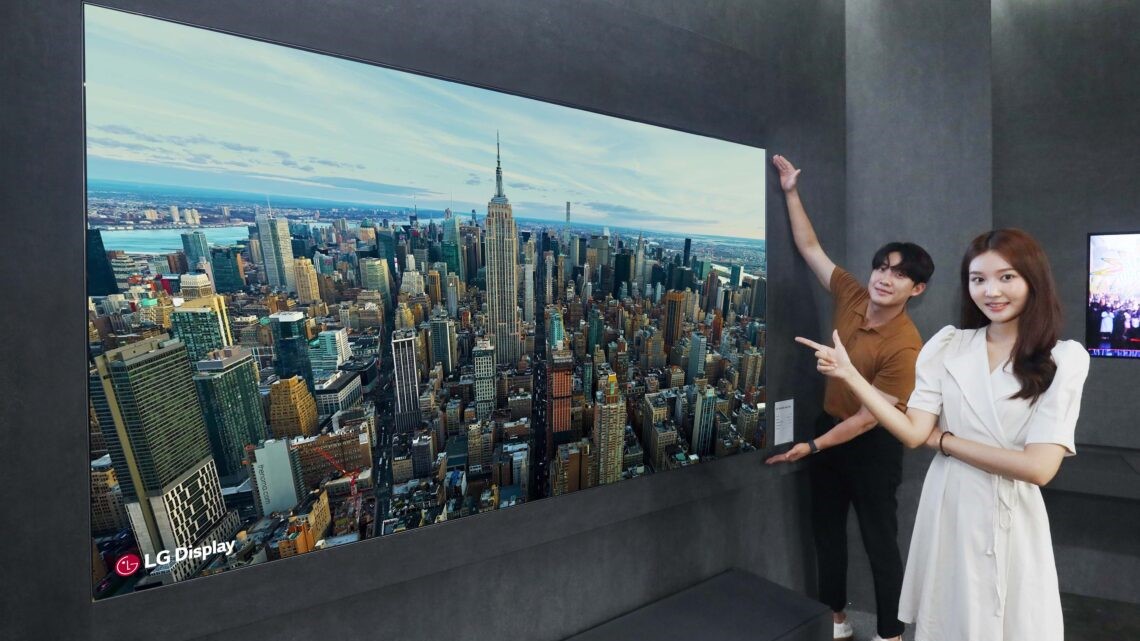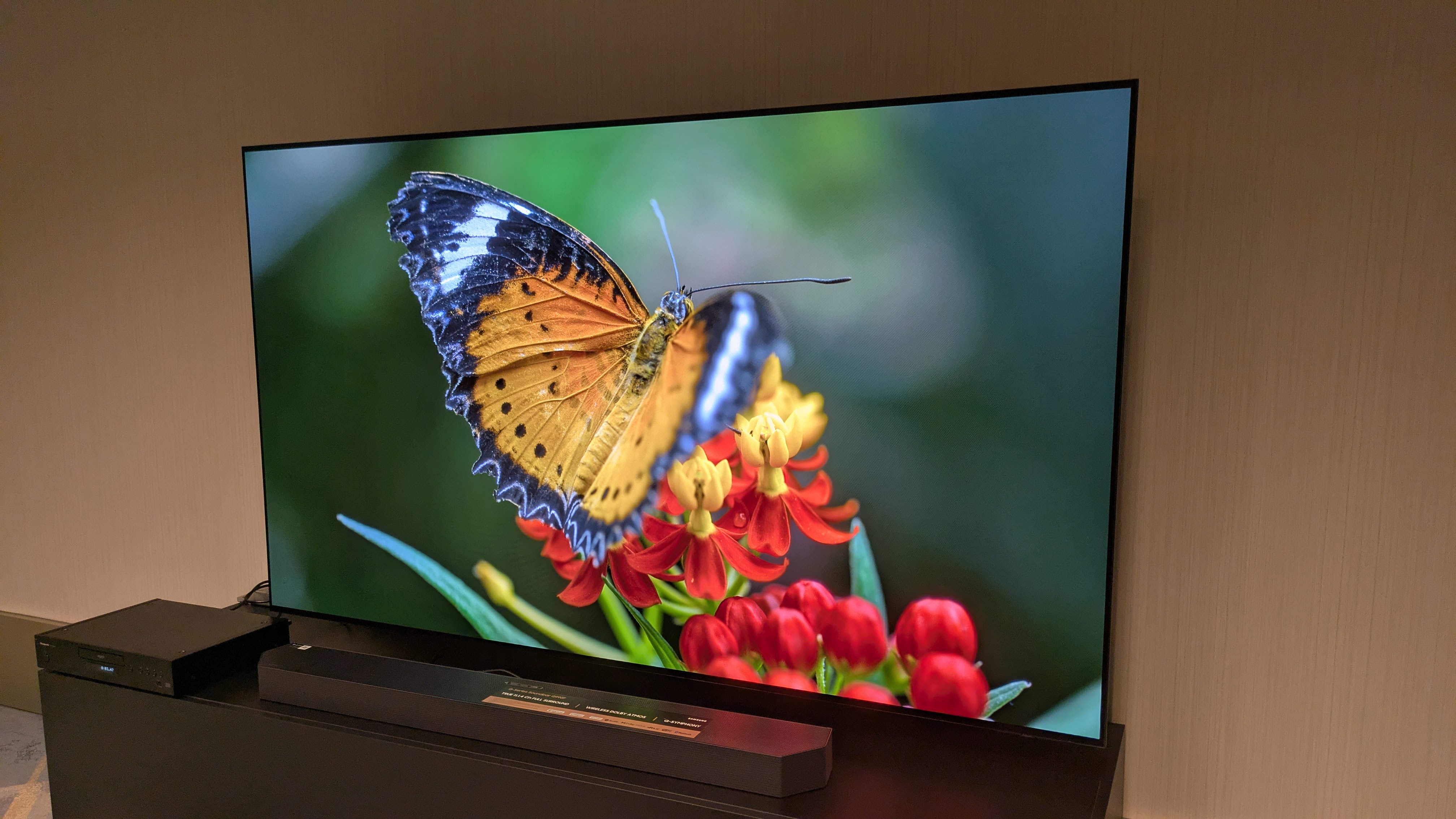Forget Samsung's new modular OLED panels – if this tech works on TVs we could get giant OLED TVs at half the price
Overcoming the OLED big-screen problem piece by piece

- Samsung Display unveils modular OLED wall-mounted screen
- The key tech change is 60% reduction in bezels on OLED displays
- It's very similar to Samsung's The Wall micro-LED product, but OLED
Samsung Display has unveiled a new modular OLED screen concept, in which a screen of a particular size or shape can be built using a series of smaller OLED displays tiled together (via Tom's Guide).
If the idea sounds familiar, that's because it's a very similar idea to Samsung's The Wall micro-LED screen – but this is the first time we've seen the idea applied to OLED.
The key tech change that's made this possible is that Samsung says it can reduce the bezel space needed on OLED and QD-OLED panels by 40%, bringing them down to 0.6mm. Now, each panel has that bezel, so actually there's a 1.2mm border between the screens, which will be enough of a black line to be noticeable, which is probably part of why this remains a concept for now.
But let's assume that Samsung can keep improving the tech and can make the bezel even smaller, in which case I think that makes this tech extremely interesting for creating giant projector-matching OLED TV screens. But I'm not necessarily interested in the square modular concept shown above – the same tech could be applied in other, similar ways.
I immediately started thinking about how the prices of the best OLED TVs rise exponentially as the sets get larger, because of particular quirks of OLED production, and how combining smaller screens could make them much more cost effective.

Four 55-inch TVs in a trenchcoat
To illustrate what I mean, I'm going to use LG's OLED TVs rather than Samsung's, because of the sizes involved. The LG G5 (the company's flagship) range includes a 97-inch model, and it costs $24,999 / £24,999.
That's literally 10 times the price of the 55-inch LG G5 model, which costs $2,499 / £2,399. And the 97-inch model actually has an inferior panel – it's a couple of generations behind, and will be nowhere near as bright as the 55-inch model's Primary RGB Tandem four-stack panel.
Get daily insight, inspiration and deals in your inbox
Sign up for breaking news, reviews, opinion, top tech deals, and more.
The reason for this is that it's incredibly hard to make large-scale OLED TV panels in a cost-effective way. OLED screens are produced on huge sheets called 'mother glass' that are then cut down to smaller sizes; so you can produce nearly four times as many 55-inch screens per mother-glass sheet as you can 97-inch screens.
But also, OLED production still has yield problems, meaning that a lot of screens are produced imperfectly, and this wastage is factored in to the cost of the displays. If you're producing a lot of panels per mother glass (if you're making phone screens for example), then the wastage doesn't matter too much – losing a panel only wastes a tiny amount of your material and time.
But if you're making 97-inch panels and there's a problem, you've lost a huge amount of material and time, and those costs are factored into the pricing of the good panels, effectively.
So the modular concept is immediately interesting because it solves that issue: combine smaller screens into one larger display and reduce the wastage problem massively.

So what I'm thinking is this: if the bezels can be reduced further, could we have a 110-inch OLED TV in the future that's actually four 55-inch TVs combined in one unit? That's even larger than the 97-inch model, and yet could cost a (relatively) mere $10,000, based on the cost of four 55-inch LG G5 TVs.
And I've used LG as my example because of the easy size comparison to existing TVs, but this new tech is coming from Samsung to potentially use in its QD-OLED TVs – and that's even better, because these panels don't go any larger than 77 inches currently, so doing this would enable it to offer a giant OLED for the first time.
It's not as simple as all that, of course. Combining four 4K OLED panels means we're talking about an 8K TV, though Samsung has plenty of experience with 8K processing.
And additionally, a lot of purists – i.e., the people most likely to want this TV – would reject any sign of a seam between the panels, so unless the bezels can be totally removed I'm probably talking about something of a pipe dream.
But it wouldn't be the first time that a secret dual-screen setup has been used to make cutting-edge tech more realistically priced – the first 5K display on an Apple iMac was literally two 1280 x 1440 displays powered by a custom display processor to treat them as one unit, with no seam down the middle.
Obviously, building a TV out of small squares also solves the screen size problem, but there's a simplicity to fixing four 4K TVs together that solves problems such as dealing with a non-standard resolution.
I don't think we're going to see a 110-inch OLED built in this way competing with the best TVs any time soon – but if this bezel-reducing tech keeps improving, it could make possible the home theater screen of your dreams, especially with micro-LED not looking like it'll become affordable in the near future.
You might also like…

Matt is TechRadar's Managing Editor for Entertainment, meaning he's in charge of persuading our team of writers and reviewers to watch the latest TV shows and movies on gorgeous TVs and listen to fantastic speakers and headphones. It's a tough task, as you can imagine. Matt has over a decade of experience in tech publishing, and previously ran the TV & audio coverage for our colleagues at T3.com, and before that he edited T3 magazine. During his career, he's also contributed to places as varied as Creative Bloq, PC Gamer, PetsRadar, MacLife, and Edge. TV and movie nerdism is his speciality, and he goes to the cinema three times a week. He's always happy to explain the virtues of Dolby Vision over a drink, but he might need to use props, like he's explaining the offside rule.
You must confirm your public display name before commenting
Please logout and then login again, you will then be prompted to enter your display name.